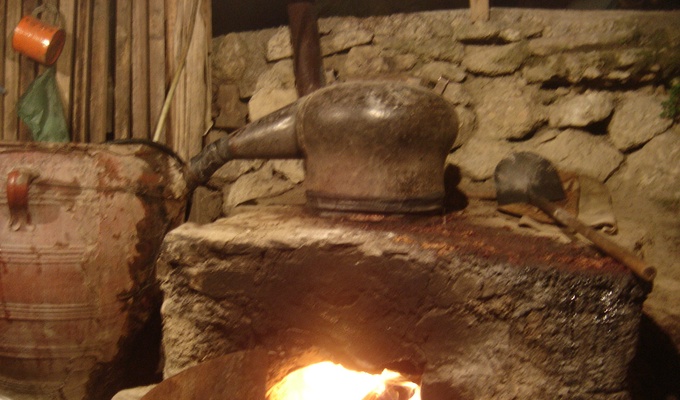Tsikoudia, also often called raki in the eastern part of Crete, is an alcoholic beverage, a fragrant, grape-based pomace brandy of Cretan origin that contains 40% to 65% alcohol by volume. Tsikoudia is made by distilling of pomace, what remains of grapes pressed in winemaking. The pomace ferments for about six weeks in a tightly sealed barrel, and is then distilled.
It is similar to tsipouro from mainland Greece, the rakı family, as well as Albanian: rakia, Spanish: orujo, Italian: grappa, French: marc, Georgian: chacha, Portuguese: bagaceira, Bulgarian: ракия, romanized: rakiya, Macedonian: ракија, romanized: rakija, Serbo-Croatian: rakija / ракија (in Istria: grappa), Romanian: tescovină. In the eastern part of Crete tsikoudia is commonly referred to as raki, but apparently less so in the west.
It is often produced at home in villages throughout Crete, and so the alcohol content varies by producer. Typically each Cretan village has one or two residents who are licensed to distill, and tsikoudia is produced continuously for two or three weeks in late October and early November.
Tsikoudia is sometimes served cold from a bottle kept in a freezer. This is commonly offered as an after dinner digestif and in most tavernas in Crete it is offered as a complimentary digestif with fruits and sweets after the meal.
